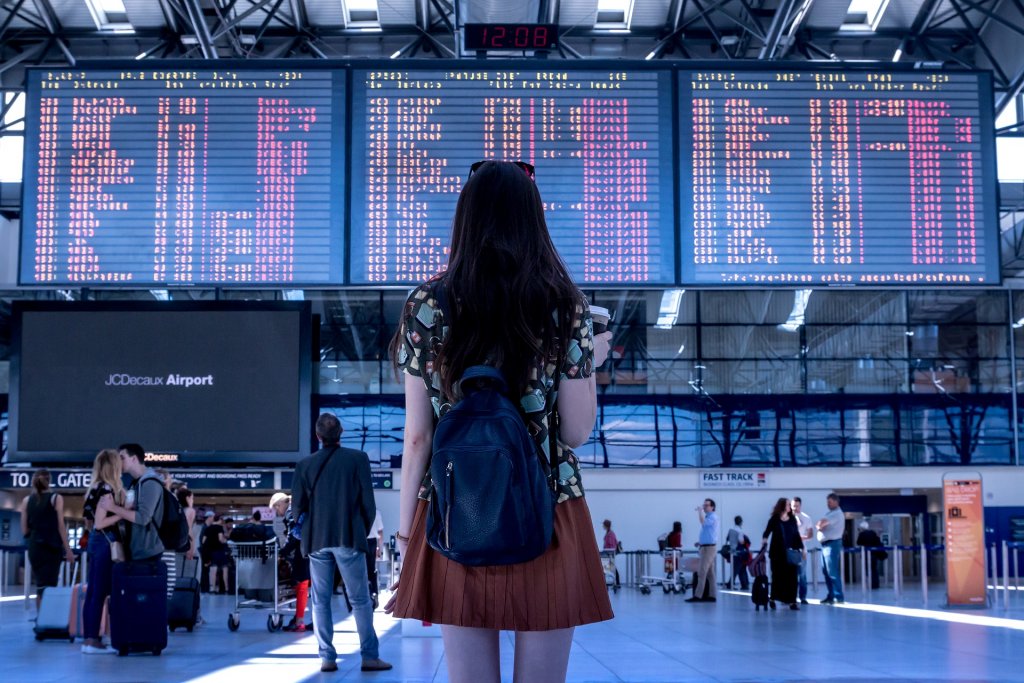
I can think of at least 2 things I would rather do than wait at the airport.
I bet you can too, and by the end of this article, you’ll be able to trade some of that unnecessary time you’re spending waiting around in the airport, to do those things!

You see, most of the time, the recommended time that airports and airlines tell you is usually double or triple the actual latest time you can arrive at the airport, and still catch your flight. If you follow their recommendations, you’re probably spending more time waiting at the airports than you have to.
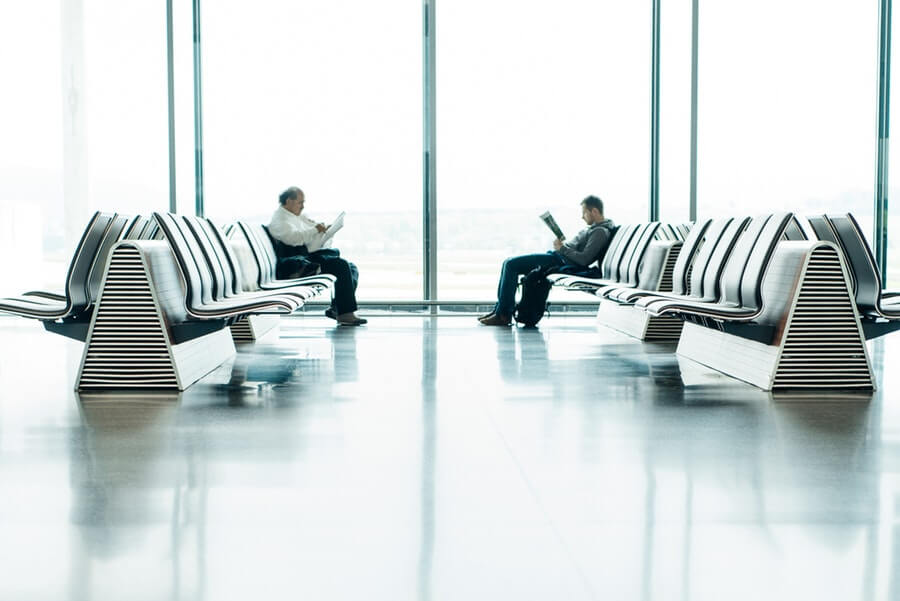
They recommend those times for a reason: to give you enough time to get through security, get to your gate, and hopefully buy a few things from the racket airport stores along the way.
Knowing the real numbers is important. It gives you a baseline from which to make your other calculations, because if your airline won’t give you your ticket, you’re not going to get on that plane. Those are valuable time considerations, but they’re far from the only ones that are relevant to making sure you make your flight.
Once you know the real time you have to be at the airport, you can calculate the other factors that can influence when you actually get to the airport. By spending a few minutes thinking about how long your trip to the airport will take, you can save hours of waiting!
It’s not as simple as checking your maps app – and in fact, if that’s all you rely on, you may be in trouble!
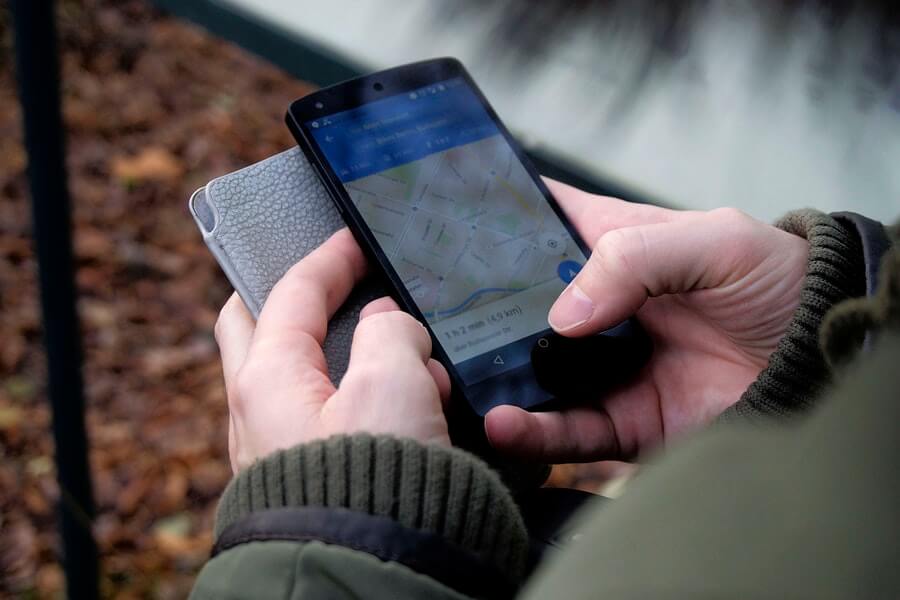
The good news is, after you’ve taken enough flights, the patterns and factors that could cause you to miss your flight, become predictable.
These factors will help answer the question of when you need to leave for your flight, to give you enough time to get there in comfort, without worrying, and without being blindsided by a last minute hour-long delay that makes you miss your flight.
Like What You See?
We’re sharing them here, so you can spend more time enjoying the day of your flight, and less time waiting around at the airport. There’s more to it than you may have thought, but once you get the hang of it, it’ll take just minutes to calculate.
Remember that these factors are all based on the initial timing you’ll have to figure out, which is the latest time you can arrive at the airport, and still catch your flight.
Traffic
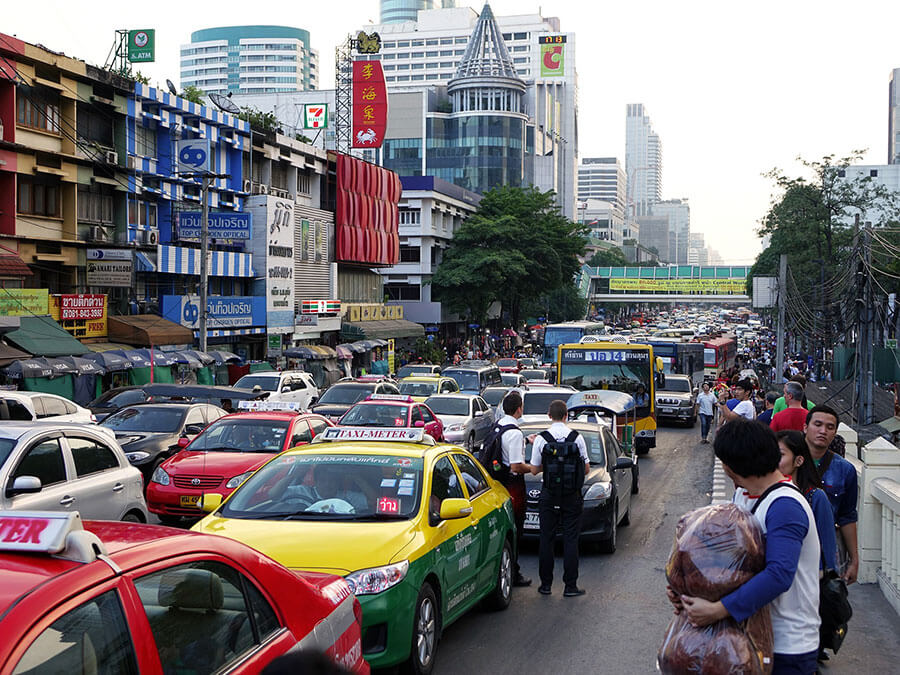
Let’s get the most obvious one out of the way first. You’re going to have to get to the airport, after all (unless you’re in an airport hotel), and that involves traffic. Naturally, the degree of traffic you are going to encounter will depend on your transportation method (which we cover in the next section), but there are several other major factors that come into play even before that.
Unfortunately, given the nature of traffic, there is no way to accurately predict it all of the time. However, there are certain factors that are constant:
Navigation Accuracy
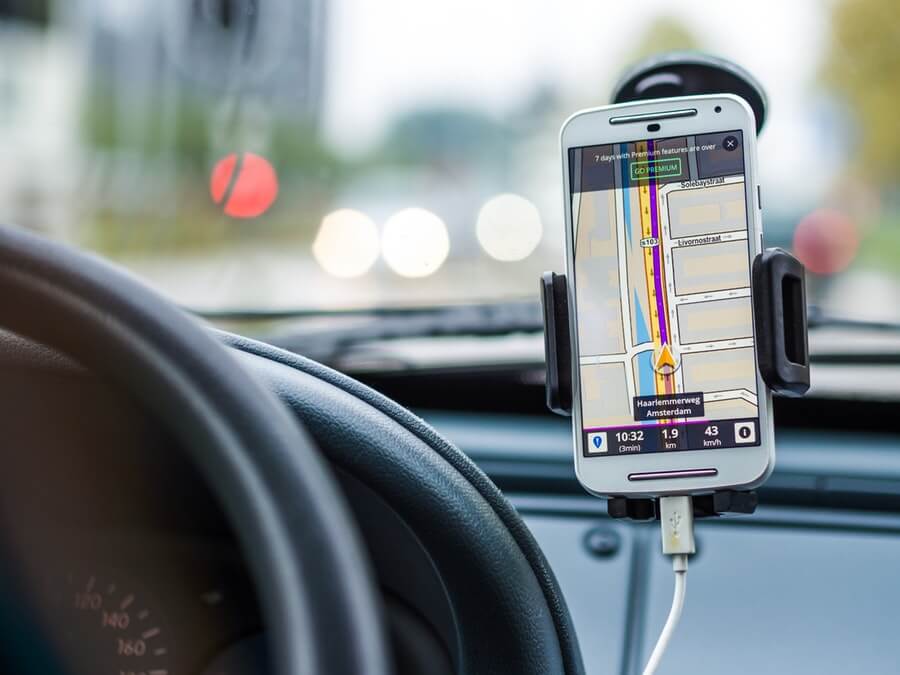
There are some countries in which you have to get a special Maps application, either due to restrictions or accuracy (for example, Naver is the Google of Korea), but when this isn’t the case, my go-to map applications are Google Maps and Waze (which is actually owned by Google), depending on the country.
If you’ve been using your navigation app of choice for some time, you’ll generally have a sense of the accuracy of its time estimates. If not, then a generalized way to get an idea of how long it’s going to take, is to average the Google Maps and Waze estimates, and add either 10 minutes if it’s under one and a half hours, or 20 minutes if it’s above that.
Those extra 10-20 minutes will usually make up for normal variances in traffic – naturally, the longer the distance, the more opportunity for variance. You generally won’t need that extra time, but when you do, you’ll be very glad to have budgeted for it.
Make sure you also select your arrival time in the app based on the real time the airline check-in counters close, so it can calculate for the specific traffic it anticipates around that time.
Time & Day
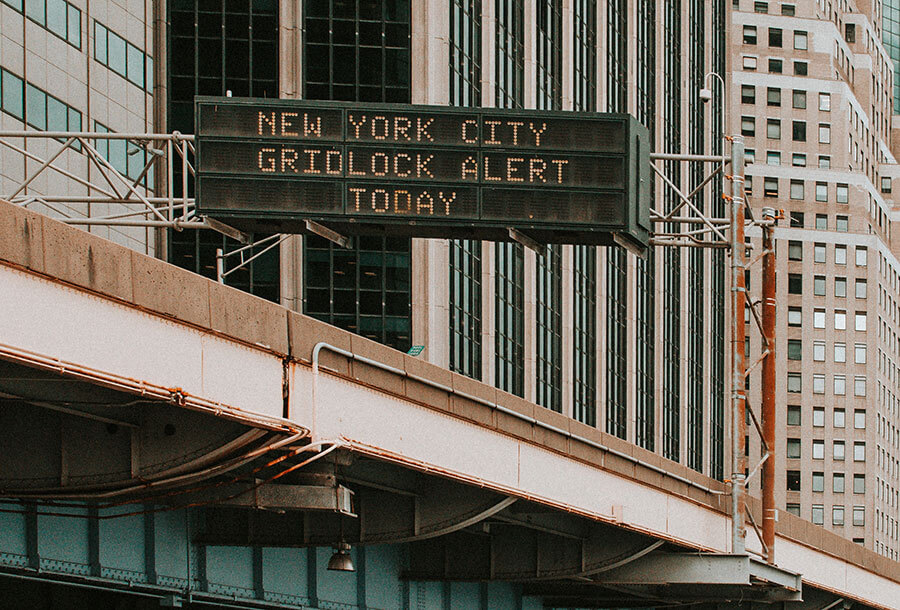
Believe it or not, rush hour is not the same world-wide, neither in severity, nor in actual time of day. For example, despite the reputation of Japanese as being very hard workers (which they are), and working very long hours (which they do), the average work day doesn’t start until 10 AM.
If your airport journey is going to be during rush hour, you may want to double the extra time (that 10-20 minutes) you add in for Navigation Accuracy. If you’re in a place that is notorious for its traffic, and if you’re staying right in the middle of it (i.e. if you can’t avoid it), then triple it.
Different countries have different spike periods. In some places, Sundays are very quiet. In others, the weekends are full of people going in and out of town, depending on what’s going on nearby. Often times, Friday evenings are full of people getting an early start on a trip out of town, Saturday mornings are full of people who couldn’t be bothered or weren’t able to leave on Friday, and Sunday evenings are full of all of those people coming back.
Holidays

Holidays can be more important to traffic than you may expect. The best way to avoid their uncertainty is to just not plan your travel on a holiday. Second to that, is making sure you research what that holiday is about.
While many holidays around the world are just treated as excuses to stay home from work, there are some public holidays that can block major routes, and shut down major airports.
If a holiday happens to create a long weekend, several days off in the middle of the week, or even longer (like Japan’s Golden Week), then you can bet on those same Friday & Saturday vacationers taking off the night before/morning of, and arriving the night of the last day – except in even greater volumes.
Beyond that, long weekends and other extended holidays in particular cause more locals to pull out their credit cards and buy flights as opposed to opting for weekending in relatively nearby places, so you may see longer delays in the airport – but more on potential airport delays later.
On the other hand, when it comes to extraordinarily long holidays – like July/August in Europe – the factors causing holiday delays can occur at different times and with varying severity based on the location.
Weather
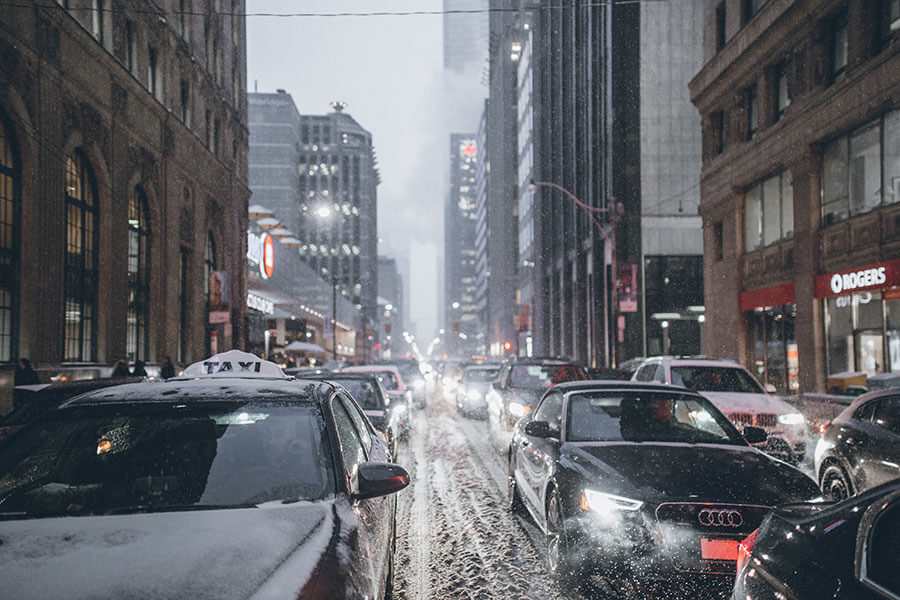
Weather and traffic have a very intimate relationship. The further you get from sunny and dry, the more you’re apt to get traffic delays. The worst is when you have sudden extreme weather, whether the place you’re in isn’t used to it. The potential delays caused by crazy weather are as unpredictable as the weather itself.
Check the forecast for the day of your flight, and use your senses.
If the weather is consistent with what’s been going on recently (e.g. just more snow), or if it’s a little bit of rain, you may want to add 10-20 minutes just in case.
If it’s anything more than “a little” or “normal”, check your local news for closures, delays, and recommendations.
If a hurricane is coming through, better baton down the hatches and reschedule that flight.
Transportation Method
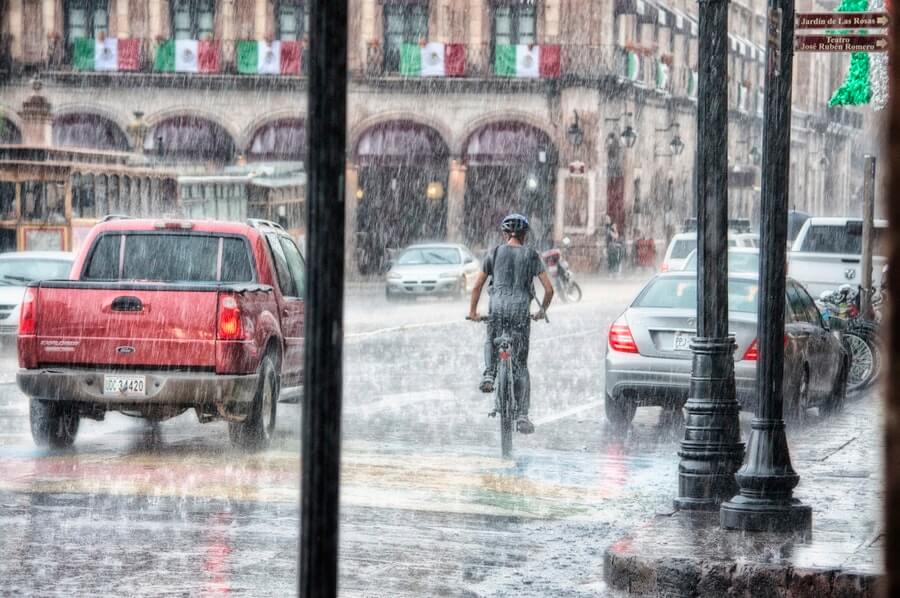
Personally, I always make sure the method of transport I use to get to and from the airport has 4 wheels, and between 2 and 7 seats. In laymen’s terms – an automobile/car/motorized carriage.
I’ve taken busses before, as well as trains, and even Songthaew’s (Thai pickup truck taxi’s that load your luggage on top, and you plus a bunch of backpackers and Thai people sit on benches in the back). Even in countries like Hong Kong – where the trains to the airport are even integrated such that you can check your luggage at the train terminal and it gets sent to the airport – the convenience of having your own transportation, and having to neither keep track of, nor haul your luggage (especially over tactile paving, high curbs, or cobblestone/gravel/uneven roads), is worth the surprisingly small premium for doing so.
Car Rental

If you’re renting a car, you will need to budget a different amount of time to return it depending on the country, and whether you’re using a local or international company. That includes time for the people to look over the car, document whatever is necessary, plus for you to get to the airline check-in counter from wherever you’re returning the car.
A baseline is to add 10 minutes if you’re in a major airport in a developed country with one of the big players (Hertz, Avis, Budget, Enterprise, etc.) that has a drop-off at the terminal, and add more time the further you get from any of those factors.
Uber (et al.)
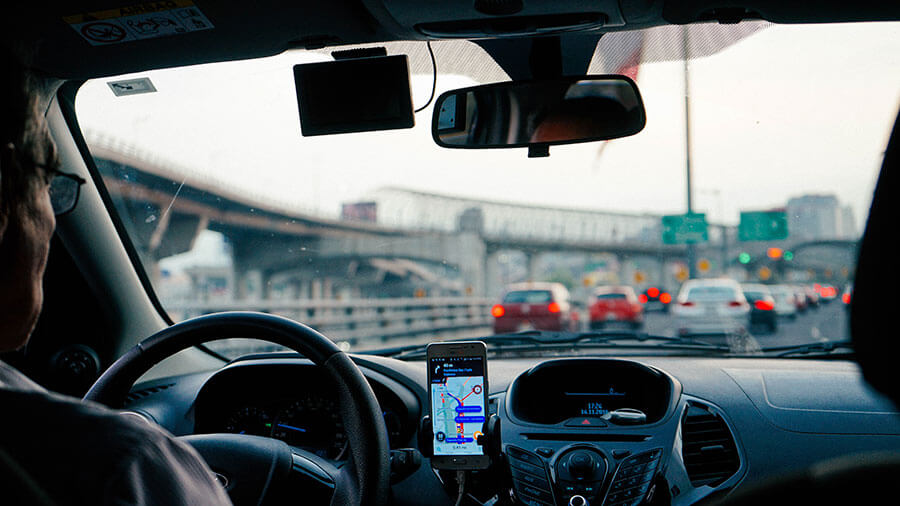
Availability of Ubers/Lyfts/Grabs/etc.s can vary wildly depending on the city, even which part of it you’re in, and of course all of the traffic-related considerations already mentioned, such as time of day.
I generally double the estimate that the app says for total time it will take the Uber to arrive, and I’m generally right. If Uber says the Uber will be there in 10 minutes, the Uber will probably be there in 20 minutes or so. Especially in countries with not-so-clear addresses, you have to give them enough time to circle the block multiple times, otherwise, like a dog about to take a nap, they won’t be able to park themselves in one place.
Keep in mind that Uber drivers can cancel trips, even if they’re on the way, and even if you’ve already been waiting for quite some time. I once spent an hour and a half waiting on cancelled Uber after cancelled Uber, and there was not a taxi in sight.
Luckily, that was not an airport run, but if you plan on using Uber to get to the airport, make sure you keep an eye on the app and do some searches an hour or two before you have to leave to see if there seem to be at least a few Ubers in your area over time.
While you’re checking the availability, also keep an eye on the approximate time the app is saying they will take, then check your Maps app to see how long it would take to drive from where you are to the airport, and add them together to figure out when you’re going to have to call the Uber.
Taxis

For those of you reading this in the future: there were these things called Taxis, which were like Ubers, but you couldn’t call one with an App so they stopped being interesting to people with phones (also: in the past, they used to call phones “smartphones”, and some people didn’t have them). In some countries, the mafia syndicates that ran the taxi monopolies decided to invest in app development and (extra) lobbying/bribing, and so since you’re traveling, you may still see some around.
If there is an App to hail taxis in a place, I generally stick with the same double estimate that I do with Uber. If I have to call a number, and they are courteous enough to give me an estimate, again double.
The only time that I will generally stick to an estimate, is if the hotel arranges the taxi for me. I’ve found most to have a good relation with the taxi companies, and get priority service since they’re usually higher fares (there’s a higher probability that somebody from the hotel is going to the airport), so a taxi is going to want to come as soon as possible.
Just like with Ubers, you’re obviously going to want to figure out ahead of time approximately how long the car is going to take to get to you, and add that to how long your Maps app says it will take to get to the airport.
Airport Delays
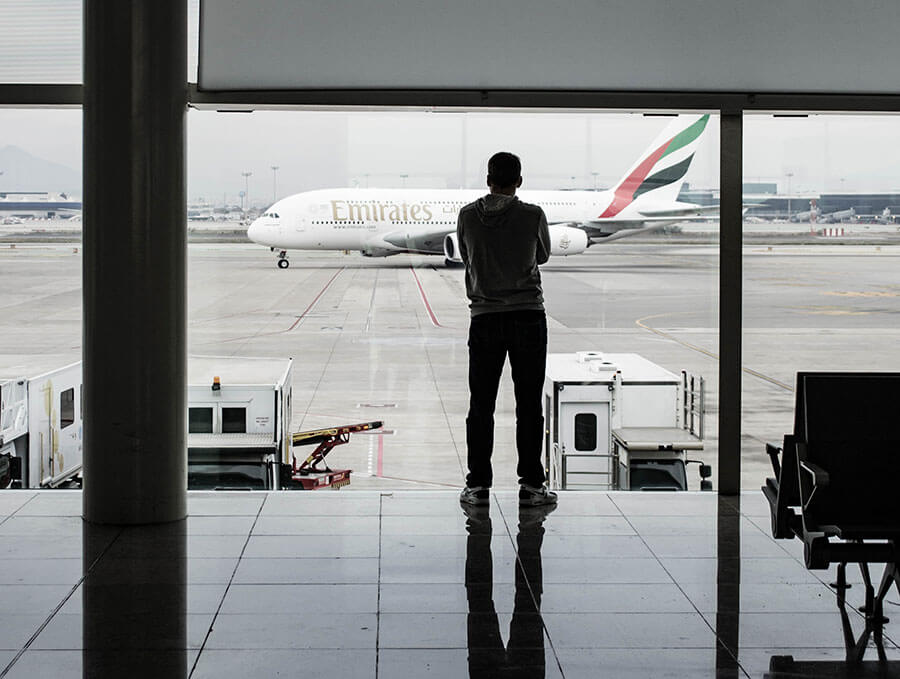
Once you’ve gotten to the airport, your potential delays are only half over. Airport delays are heavily impacted by holidays, time of day, and of course which airport you’re in, which airline you’re flying with, and what the route is (more specifically, at least what your starting airline/first connection is).
The principle with estimating the delays you’ll face at airports, is generally the opposite of rental cars. With rental cars, the bigger the company, and the bigger the airport, the faster you’re generally going to be taken care of. Whereas, when it comes to airports, the bigger the airport, the better the airline, the more popular the route, and the more normal the hour, the longer you’re going to be waiting.
Delays at the airport fall into one three categories: lines, lines and more lines.
Lines

First of all, there is the check-in line itself. If you’re not a member of any priority/rewards program, don’t have a business/first (or on certain airlines, economy plus/premium economy) ticket, or haven’t purchased a priority check-in/boarding option, then you may be in for a long wait time at the check-in counter.
If you have a particularly obscure route, or an unpopular first connection, the lines could be nearly non-existent. While not a factor worth considering when buying your plane tickets, it’s worth considering when it comes to planning your airport travel time.
Like What You See?
If you’re not checking luggage (or your airline has a separate luggage drop off line for online check-in), you can save time by skipping the check-in line entirely, if your airline offers online check-in, or self-check-in at the airport (via kiosks).
The good news is that long lines at the check-in counter will usually mean that you don’t save much time going there early as opposed to near the close time, since counters will remain open as long as there is a line. Some may start announcing specific flights to try and get those people checked in before the others, and in other cases, you can go right up to the front and say “hey, the check-in counter close time for my flight is in 2 minutes, are all these 300 people waiting for the same flight or could I skip the line?”
There is, however, a reason that they will do that announcing, and potentially accept your plea of panic: they want to make sure that you get through the rest of the lines, and make your flight on time.
Lines

After you’ve passed the first lines, come the closely related second and third lines of security and immigration, respectively. Your experience can vary wildly here, depending on your visa status, how strong your passport is, whatever profiling they do, that particular country’s policies and practices (including its diplomatic relations with the country whose passport you hold), as well as/including your decision to opt out of certain screening that may or may not be bad for your health and/or privacy.
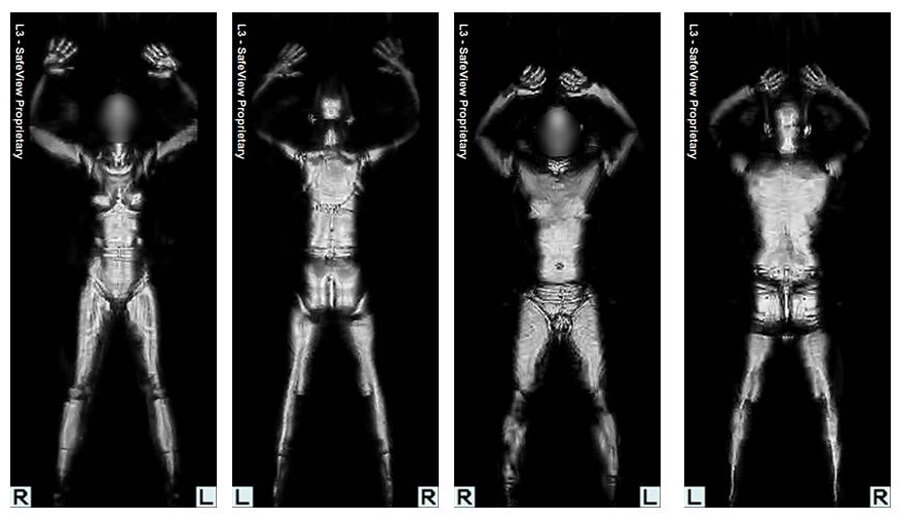
+ “But, officer! I didn’t do anything wrong!”
– “You heard me! It’s the machine, or the manhandling!”
+ “I’d rather have the massage”
– “Have it your way.”
45 Ineffective Minutes Later…
– “By the power vested in me by the US government, I shall now cup your sack.”
Generally speaking, if you’ve got no black marks against you, the amount of time given to you by the airline after the check-in counter closes, will be enough to get past those mandatory lines. If you have any doubt, you can google for average times to pass security and immigration at your specific airport.
There are, however, still some more lines that can really ruin your day, and you’ll want to make sure you take those into consideration.
More Lines

So, you’ve passed all the mandatory lines, obviously except the last line to actually board, but we’re not considering that because if you’ve made it that far, they’re probably going to let you on the plane.
I say probably, because do remember that you have to be there a specific amount of time prior to the boarding time, which it will usually say on your boarding pass (usually either 20 or 30 minutes). Even with that, some airlines can be shady about honoring that time frame. For example, I once missed an Emirates flight because the boarding pass said 20 minutes, the staff confirmed it was 20 minutes, then when I returned 25 minutes prior to the boarding time after doing some shopping, they refused me, saying it was actually 30 minutes. It pays to always allow for a buffer/margin of error, but we’ll get into that in the next section.
As for making sure you actually get to your plane on time, there are some lines you may have to – or want to – face on your way.
The first, and also the ones which can cause the most delay, are a different kind of lines: the transport “lines” which bring you between terminals.
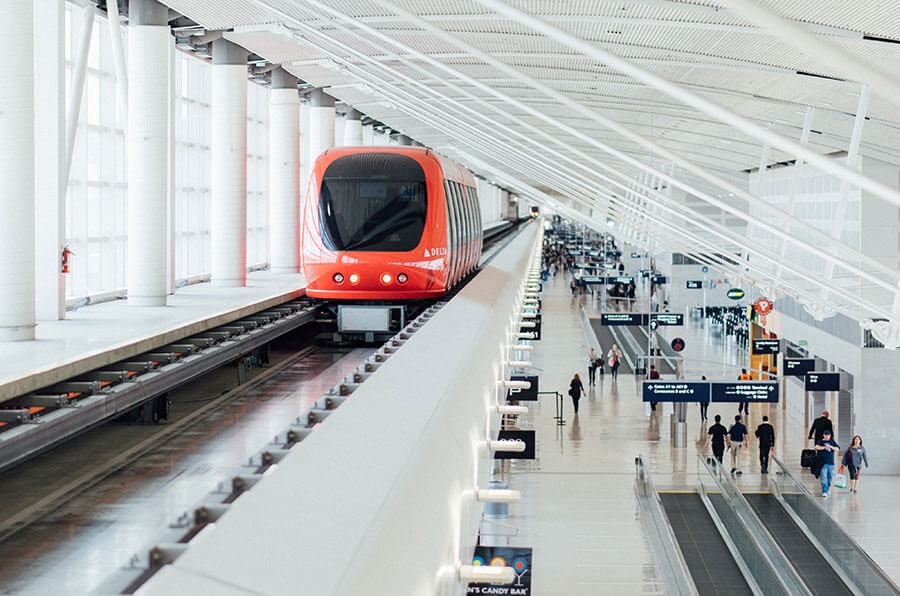
I’ve often found myself at an unfamiliar airport, feeling safe about my 60 minutes I have between the check in and the flight time – or indeed, the time I have between flights – only to learn that my actual flight is 2 terminals away! That extra 15-30 minutes of traveling – let’s call it “running at top speed” – including waiting for people movers, can really cut into any margin of time you may have thought you had.
If you’re traveling from a small airport, chances are you’ll be able to see your gate from the other side of the immigration desk. If it’s a big airport, however, you may want to ask in advance whether you’ll be flying from a different terminal.
On your way to your gate, you may also opt to get in a line or two, and pick up some essentials for the flight. I make sure to always buy at least 2 liters of water (more if it’s a long-haul flight), which makes sure I have my own supply on the plane without having to wait, plus enough to make it to my accommodations and to last me until I can pick up some water/necessities, which is usually one of the first things I do when I get to a place.
Human Delays
Before any of that, though, it is important to consider the humans involved in your travel, and how they may delay things – even if you travel by yourself.
Does a toddler need more or less time, attention, and cajoling than a 5-year-old?
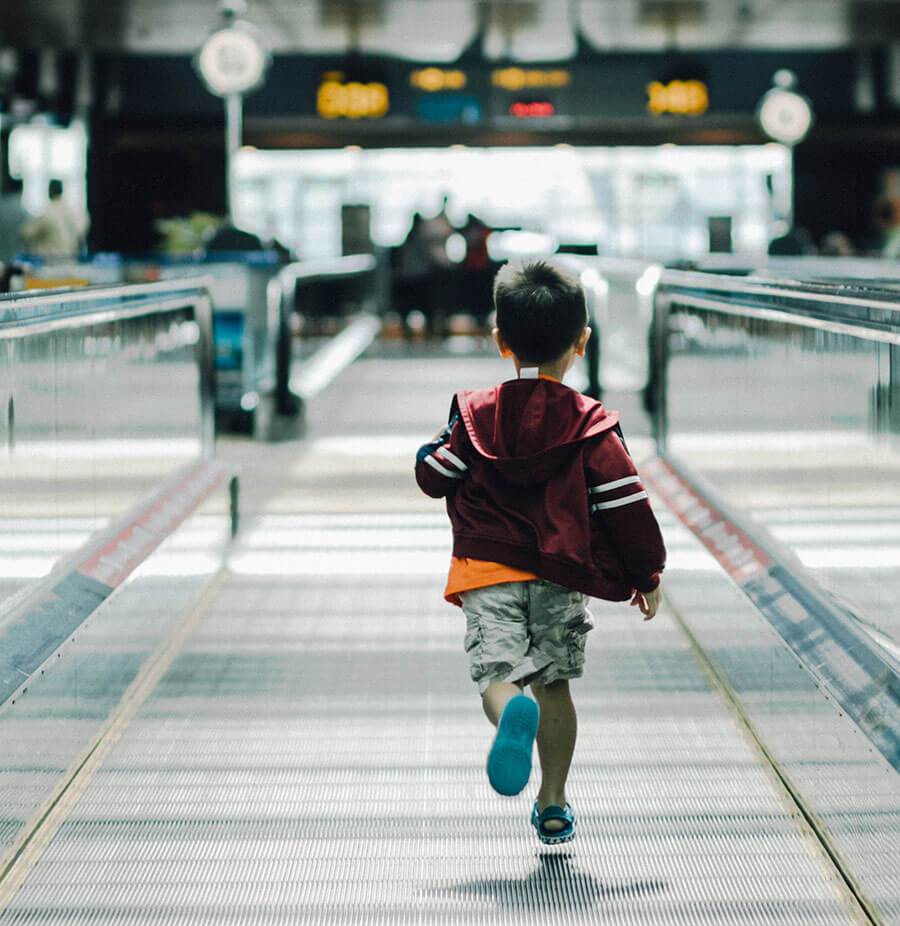
Is your goth teen a prima donna drama queen and “doesn’t care about missing the flight because nothing matters, leave me alone” (and also doesn’t understand who will pay for the hotel room if they’re the only one left in it)?
Is your friend always late?
Does your partner take a long time to get ready, or leave everything to the last minute and forget things?
Depending on the number of people you travel with – and their ages and tendencies – you may want to get accustomed to adding (what will probably become a pretty consistent amount of) time to your travel routine.
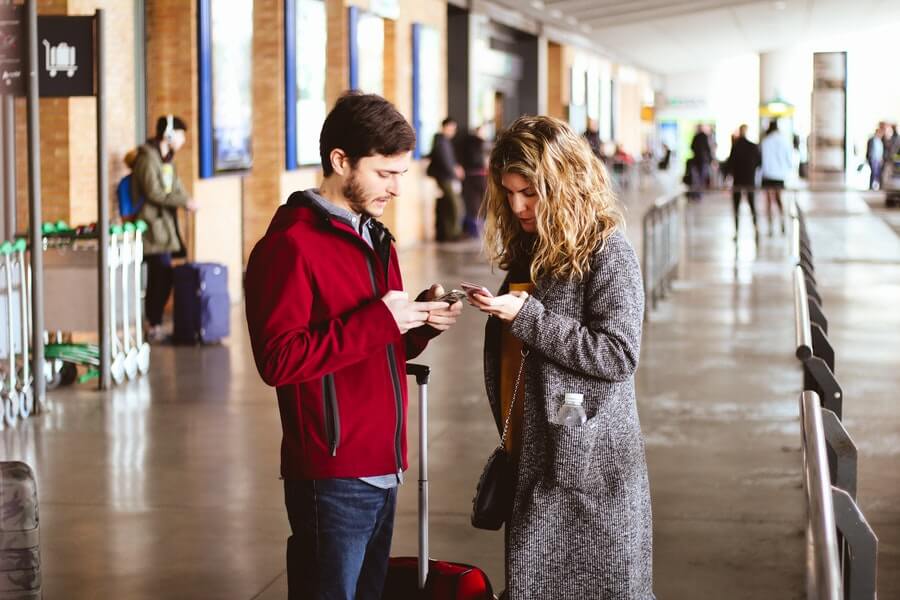
“Why are you asking me? He’s your friend.”
“Let’s not do this in public.”
How much, will probably be immediately apparent to you based on your past experience with those people. These same factors, of course, go for you. Are you frequently packing at the last minute, and rushing around on the morning of your flight? If so, you may be apt to forgetting certain things and need a bit of extra time just in case.
Buffers
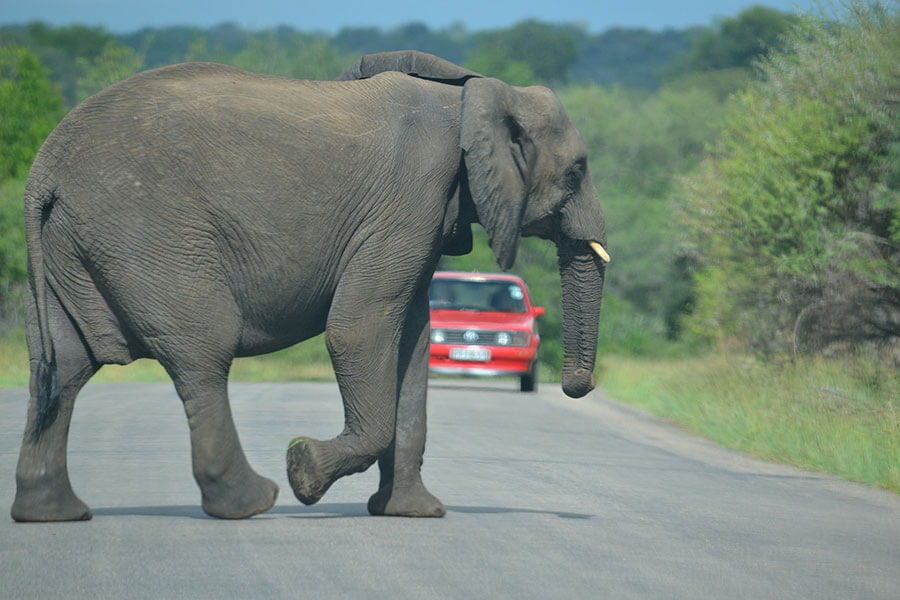
Finally, you’ll want to consider some buffers. I usually allot 15-30 minutes of buffer time to the timing I plan out when it comes to flights, depending on how well I know the place; the better I know it, the more I can predict the important factors through experience. There have been many cases where this buffer has made the difference between me missing a flight (and in the case of terminal changes – missing a connection).
Then, there’s also your personal tolerance for risk. That’s not only based on your level of anxiousness, but other factors (which can also affect anxiousness), like your bank account balance. I’m okay with my 15-30 minute buffer, because I like to safe-guard my time, spend it on more enjoyable or important things, and I have my travel routine set to a point where I’m certain that unless there’s some major inconvenience, I’m going to make it – and I can afford to reschedule if I don’t.
Sometimes, they’ll reschedule you for free at the check-in counter if you arrive late – if you’re nice and they’re in a good mood. I have missed flights in the past, and all but once, they’ve rebooked me at no cost – all I had to do was ask nicely (the time that I didn’t, I was with somebody else, and they asked, but not nicely!).
Consider your tolerance to risk, when you add a buffer for your travel times. After all, it doesn’t do you much good to spend an extra hour not being at the airport, if that hour is going to be full of worry and stress.
Calculating Your Airport Trip Time – It’s Easier Than You Think

Although there are multiple factors involved, and it may seem like a lot to consider, it isn’t that complex after you’ve gotten your head around the basic concept, and used it a few times.
It takes me a few minutes to think about how long it’s going to take me to get to the airport – including checking all the travel apps that make life while traveling so much easier – and those few minutes consistently save me hours of waiting around, as well as the costs of not having to rebook flights that I was late for.
It really is one of those rare circumstances where you can have your cake, and eat it too.
Summary of Steps:
To boil it all down, the calculation process goes something like this. If you haven’t already, make sure to read the respective sections above to get a full set of the factors that are considered in these steps:
- Navigation: Check the amount of time Google Maps and Waze say it’s going to take, then average them, and add 10 minutes if the estimate is below 1:30, or 20 if it’s above that. Make sure to select your approximate arrival time, as that will make a difference in the traffic calculation that the app makes. You’ll want to base this time on the real time you need to be at the airport, rather than the “2-3 hours prior” that the airlines tell you.
- Time & Day: Figure out if you’ll be traveling during rush hour, how heavy it is for your city, and how much of it you’ll be going through, then add 10-20-30 minutes depending on those 3 factors. Make sure to account for which day of the week it is, because rush hour is different on the weekends – and in some places, doesn’t occur then.
- Holidays: If it’s a holiday as well, figure out if it’s one that’s going to cause some traffic disturbance (e.g. public celebration, long weekend, etc.). If there’s going to be road closures, then the delay is going to depend on how severe they are, and how easy it’s going to be to get around them. If it’s an extended holiday (in and of itself, or if it makes a long weekend), just calculate it as a rush hour.
- Weather: If it’s sunny and dry, don’t worry about it. Add 10-20 minutes if it’s “light” or “normal” rain or snow. If it’s anything beyond that, like “heavy”, “severe”, or unusual weather like freezing rain, check the local news for road closures, delays, etc., and estimate accordingly. If it’s anything worse than that, book another night, and fly another day.
- Transportation Method: If you’re taking an Uber or a Taxi, assume it’s going to take them around 10 minutes to get to you. If you’re renting a car that you have to return, 10-20 minutes will generally be enough in most places (unless you have to take a subsequent shuttle to the airport), but refer to the explanation in the “Transportation Method” section above for the factors that may make this estimate go one way or the other.
- Airport Delays: If you don’t have priority boarding (either through a loyalty program/ticket perk/purchased option), and you have bags to check (unless you know that you can print your boarding pass and drop off your luggage without waiting in line), then you should be at the airport at least 15-30 minutes before the check-in counter close time. Multiply that time by 2 if it’s a busy travel period like a holiday, and/or another 1-2x if you’re also at a major airport and/or flying with a major airline. After checking in, you are generally going to be able to make your flight, except you may want to add 10-15 minutes if it’s a giant airport with multiple terminals, and you aren’t checking in at the same terminal you’re departing from (you can call ahead to find this out – but you may spend more time on hold than you would just adding the time, if you already know you’re flying out of a large, major airport like JFK).
- Human Delays: Ah, human delays. The big asterisk of life. Only you can determine how long the humans in your life are apt to delay you. Refer to the “Human Delays” section above for some factors to consider.
- Buffers: I always add at least another 15-30 minutes of buffer time. It’s meant to account for variables, so the more of them you have in your life (e.g. acute, and/or multiple human delay potentials) the more buffer time you will want to add.
Putting It to the Test: A Real-World Example

Here’s an example calculation I did for a recent flight:
- Navigation: I’m going from Kowloon Bay to Hong Kong International Airport (HKG). I know the airline closes its check-in counter 45 minutes before the flight time, and I have a noon flight to Korea (based on several factors I use to pick the best time to fly). I know that the route takes about 45 minutes, plus 10 minutes just in case (in this case, I know the route well – the first time I added 20 minutes).
- Current time prior to flight departure: 1:40
- Time & Day: My flight is on a Saturday, and at noon, so I don’t have to account for traffic beyond the 10 minutes I added to the navigation time.
- Current time prior to flight departure: 1:40
- Holidays: Not today! (Again, this is something I plan for)
- Current time prior to flight departure: 1:40
- Weather: It’s a beautiful, sunny, steaming hot Hong Kong summer day.
- Current time prior to flight departure: 1:40
- Transportation Method: I’m taking an Uber, from an address that’s easy to find, in an area that generally has at least a few Ubers around. I’ll add another 10 minutes here in case one cancels or takes their sweet time circling the block a few times (they did the latter).
- Current time prior to flight departure: 1:50
- Airport Delays: I have priority boarding, a strong passport, and HKG – although having multiple terminals – is quick to get around.
- Current time prior to flight departure: 1:50
- Human Delays: I’m flying by myself.
- Current time prior to flight departure: 1:50
- Buffers: Add in ‘ole reliable (15 minutes since I’m confident I know the place well enough – it would be 30 minutes if I hadn’t been in the country for long, if I felt I couldn’t predict its “consistency”, or if such would have me believe there may be more unpredictable variations), and we have a final calculation:
- Total time prior to flight departure: 2:05
The result? I was prepared to leave at 9:45AM (which was 2:15 prior to departure). In this case, there were some last-minute delays. The Uber ended up picking me up at 10:30AM, but thanks to the buffers, I still made it to the check-in counter on time, and was at the gate well in advance of the flight.
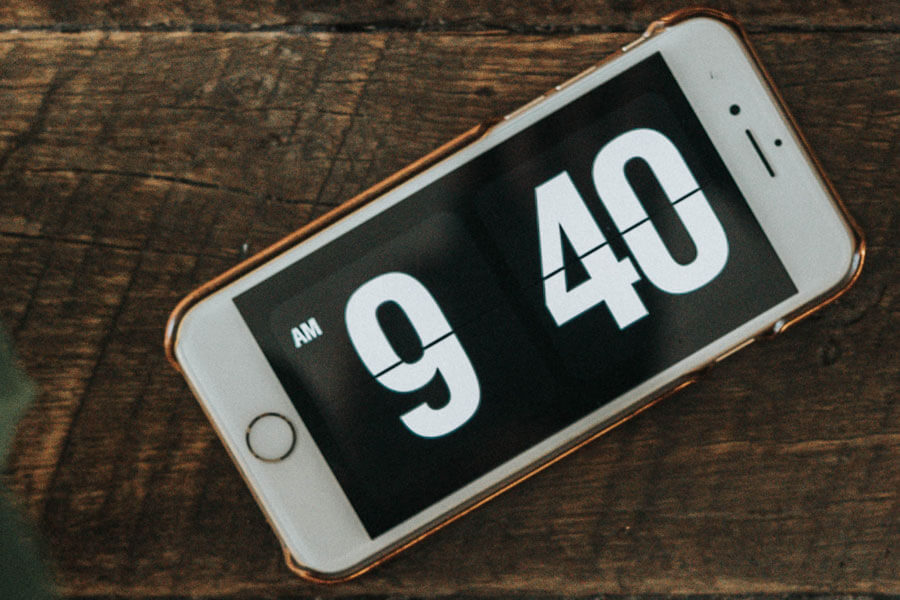
It really pays to have those buffers. They can be the difference between you making or missing your flight.
It also pays to make the calculations, as a few minutes spent thinking can save you hours off the time that the airlines tell you to be at the airport. In this case, I *left* to go to the airport one and a half hours after “conventional wisdom” would say I should have *arrived* at the airport (3 hours for an international flight), and made my flight.
So how does the formula stack up for you? Post your calculations, and the actual times for your next flight in the comments!
